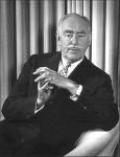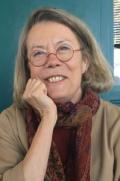In the Navy we found parts to make a color television in 1946. Anything to watch the heavyweight championship.
In 1946 I was in the U.S. Navy, stationed at the Naval Research Laboratory in Washington, D.C.
The super-secret atomic bomb made a giant, bright yellow fireball like a super-sun that hurt the eyes.
In 1945 I was a member of a supersecret Army intelligence unit attached to the Manhattan Project, which produced the atomic bomb.
When I was a kid I had a nervy dad, whose dream had been to make it in professional sports, preferably baseball.
Will Rogers might not have died if Wiley Post had taken my advice about his airplane
When I was a licensed “ramp rat” at the Pacific Airmotive Company in Burbank, California, during the thirties, a parade of American flying legends brought their equally famous airplanes to us for servicing and maintenance.
I played with the knobs and dials, not knowing I might have blown up Chicago.
During World War II, I served aboard USS Alabama in the United States Navy. Al Barkan, a shipmate more than ten years my senior, assumed the role of mentor to me. Al was a graduate of the University of Chicago and a natural teacher.
I had a special reason for covering myself with Alf Landon campaign buttons.
It was the fall of 1936, and students at West Grammar School in Portland, Maine, were excited. Alf Landon was coming to Portland! Mr. Landon was running for President against Franklin Roosevelt.
Many of us had ghastly wounds or missing limbs from shrapnel, bullets, or fire. “I know just how you boys feel,” the President announced.
In 1965 I spent eight months at Bethesda Naval Hospital recovering from shrapnel wounds and two broken legs received in Vietnam. One day that fall, our corpsmen announced that some of us were to be wheel-chaired to a meeting with the President of the United States. Lyndon B.
“Shut up!” I blurted out at the voice behind me while I was trying to hear a critical weather report on the U.S.S. Missouri.
None of us looked forward to going on duty and standing our watch. Four hours on and four hours off around the clock was not an easy routine. This was especially true if you were a radioman aboard the USS Missouri, flagship for the U.S.
“That’s General MacArthur! Clear the port wing of the bridge!!”
October 19, 1944. Evening. On U.S. destroyer with invasion fleet en route to Leyte Gulf, Philippines. Destroyer taking fuel along starboard side of USS Nashville.
“You know who Nebuchadnezzar was, don’t you?” Truman asked.
I was a young reporter in Chicago on the day in 1956 that Harry Truman turned the tables on me. He gave me the most memorable interview of my reporting career, but I was too embarrassed to turn it in to my editor.
“This is the White House calling,” the voice on the phone told the language teacher
From 1957 to 1980 I taught German at the Foreign Service Institute School of Language Studies, run by the Department of State in Washington, D.C. Classes were small, seldom more than four students, and I spent six hours every day with them, five days a week for five months.
My mother loved parades and early on imbued me with a love of same. An incident at one sticks in my mind. I believe it was in 1926 or 1927. I can’t be sure as I was only a small boy then.
As the war was coming to an end, we asked the German guards if we could hold a ceremony in Roosevelt’s honor
The heavy cannonading in the east told the American POWs in Kommando 64/VI that the war was almost over. We had survived the brutally cold Baltic winter in this satellite labor camp of a German stalag and were now enjoying the first tenuous rays of the spring sun.
What were the protocols for deploying nearly two thousand people?
In the late afternoon of Thursday, April 12, 1945, my wife and I were relaxing on the front terrace of our West Point quarters. Such a mild, sunny day seldom came to the Hudson Valley so early in the spring.
Not all the Germans of the Third Reich agreed with Hitler on the “Jewish question,” he wanted me to know.
It is hard for a journalist to admit that he didn’t know a story when he spent an evening with it. I had that experience, sad to say because the story was no less than the imminent honeymoon of Adolf Hitler and Joseph Stalin.
Tom Mix, my all-time hero, lifted me up and sat me on Tony.
The year was 1932; the country, like most of the world, was in the depths of the Depression. I was seven years old. My brush with history began one day when I heard my dad call my name as he burst through the back door. I thought, What have I done now?
The first Soviet conductor to tour in the United States had been accused with “antidemocratic tendencies.”
By October 30, 1958, Nikita Khrushchev’s assumption of power over the Soviet Union had already produced a slight, if uneven, warming of the Cold War.
It was 1956, and Adlai Stevenson was running against Dwight Elsenhower for the Presidency. People who supported Stevenson tended to feel an almost personal emotion for him, and I felt as if a beloved relative were running.
As a college sophomore in 1960, I had little interest in politics except that the woman I was dating was a member of the Young Democrats on campus.
The Japanese had made my tune their own.
The Japanese had surrendered. I was hurried from Manila to Tokyo in my capacity as a junior officer investigating war crimes.
A great man never loses his sense of humor
Near the end of the flapper era, most girls’ finishing schools were islands in a sea of young people suddenly gone mad with freedom, and Highland Hall was no exception.
For me he was always just Uncle Max, and she, Aunt Sophie. They lived two houses down from me in suburban Long Island. And though I spent many hours of my childhood in his company in the late forties and early fifties, I never knew who he really was.
In the late 1960s I was a reporter on the staff of a big-city daily newspaper in the border South. My beat was local politics, which at the time had edged into civil rights and sometimes racial confrontations. The issues were clear.
In his last time at the plate, Ted Williams crushed a 440-foot home run deep to right field.
Only those of us who were there know what Ike was really saying when the famous photograph was taken.
The greatest challenge for the editors of this magazine since its beginnings thirty-five years ago has been to make the events and personalities of the past come alive again.
For thirty-five years now the editors of American Heritage have worked to verify the fundamental premise of the magazine, which is, simply, that history happens to everyone.





